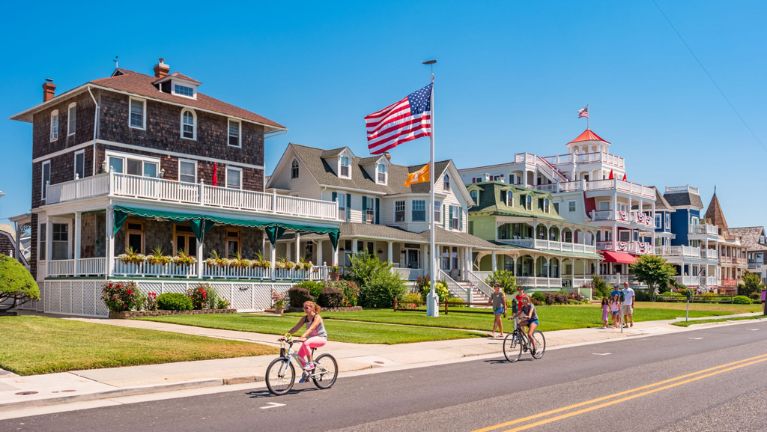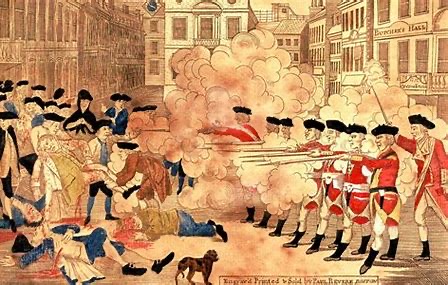

Timothy Eagan’s “A Fever in the Heartland: the Ku Klux Klan’s plot to take over America, and the woman who stopped them” (2023). Yes, this is a true story. 1920s. Indiana. D.C. Stephenson. Madge Oberholtzer. And 250,000 white male Hoosiers who paid $10 plus annual dues to join the newly resurrected KKK with the privilege of wearing a white sheet and cone hat to hate anyone different from them — in Indiana this included Blacks, Jews, Catholics. Membership was 30% of the native born state male population. There were also a woman’s and children’s divisions established.



I knew about the resurgence of the KKK during the 1920s. American life wasn’t just the era of the roaring, carefree, prohibition, flapper, stock market, giddy, fling after the trauma of World War. In my Holy Ghost Prep film course, I often showed “Birth of a Nation” (1915). D. W. Griffith landmark epic that glorifies the Confederacy, Jim Crow, and the KKK. The characterization of Blacks displayed every possible negative stereotype — backward, lewd, dishonest, lazy, dirty, lusting for white women and political power. It is a silent film with a powerful soundtrack and title cards, some displaying racist quotes by President Woodrow Wilson. For me “A Fever in the Heartland” writes a new, extremely detailed chapter to the decade. Although the setting is Indiana where the KKK flourished, Colorado, Oregon, Ohio, Pennsylvania and many other states had lots of Klan activity. I recall reading about Klan cross burnings in Bucks County where I live.


D. C. Stephenson moved from Texas/Oklahoma to Indiana in 1920. He was a Democrat. He soon became a Klan recruiter and in 1922 supported Hiram Wesley Evans as Imperial Wizard. Evans looked forward to a Klan with national power and influence. He appointed Stephenson in 1923 as Grand Dragon of the Indiana chapter and head of Klan recruiting for other Northern states. He grew wealthy, taking a cut of membership fees and uniforms. He paid Protestant ministers to support and encourage Klan membership. Klan ranks swelled; in Indiana more than any other state. Stephenson soon became a major political power in Indiana as Klansmen began to be elected and appointed to political offices, bank and business CEOs, police officers, lawyers. Since Indiana was Republican, he changed his registration and supported Republican Ed Jackson for governor. He won and Stephenson’s power grew. He was fond of declaring, “I am the law.” And talked about a run for U.S. President. Sound familiar.


Stephenson purchased a large mansion and hosted wild, alcohol and sex laced parties. He drank heavily (remember it’s the prohibition era) and became sexual violent, had several wives and many “girl friends.” He was known to beat them. At the same time he joined forces with the Anti-Saloon League, a powerful lobbying group, and helped pass one of the strongest anti-liquor laws in the country.
Egan writes about many examples of KKK secrecy and rituals and attacks on enemies, religions other than Protestant, particularly Catholics, Blacks, immigrants with dark skin tones. They used intimidation, cross burning (maybe buildings), terrorizing, threats, beatings, and lynching. There were thousands of lynchings across the country.

Madge Oberholtzer was an average working woman from a German-American, Methodist background. In 1925 she worried about losing her job working in an adult literacy program. She met and befriended Stephenson who could be well spoken, a good dresser, smooth. Maybe he could help with her job. In March 1925 she was abducted by D.C. Stephenson who held her captive in his private train car. She was raped and tortured —- he bit and chewed her entire body. Sick.
From the Smithsonian:
“On March 16, 1925, in the muted morning light of a hotel room in Hammond, Indiana, 29-year-old Madge Oberholtzer reached into the pocket of the man sleeping next to her. She found the grip of his revolver and slid it out, inch by inch, praying he wouldn’t stir. The man was D.C. Stephenson, political power broker and Grand Dragon of the Ku Klux Klan in 23 Northern states. With shaking hands she aimed the gun between his closed eyes. What passed for a lucid thought came to mind: She would disgrace her family if she were to commit murder; instead, she would kill herself.
She crept into an adjoining room and faced a full-length mirror. Beneath her dress chunks of her were missing. Bite marks covered her face, neck, breasts, back, legs and ankles, a macabre pattern of polka dots etched along her skin. She was bleeding from the mouth; he had even chewed her tongue. Her hand was steadier this time, lifting the gun to her temple, when she heard a step outside the door and the squeak of a turning knob. It was one of Stephenson’s associates. She buried the gun into the fold of her dress and slipped it back into the sleeping man’s pocket. She would find another way to kill herself, if he didn’t kill her first.
It was the beginning of the end, in different ways, for both Madge Oberholtzer and D.C. Stephenson, although the politician had long believed himself infallible. “I am the law in Indiana,” he famously declared, and with reason. At age 33, Stephenson was one of the most powerful men in the state, having controlled the governor’s election and the movements of several state legislators, influencing bills on nutrition, steam pollution, fire insurance, highways and even oleomargarine, all of which would line his pockets with graft. His hand-picked candidate for mayor of Indianapolis seemed certain to win election, and Stephenson himself dreamed of running for the U.S. Senate, even president.”
Madge was allowed to go to a drug store with one of Stephenson’s body guards. She buys and takes a poison. It doesn’t kill her immediately but begins to eat away at her internal organs. Stephenson returns home and locks her up, refusing medical help. Finally he gets one of his thugs to take her to her family house. A doctor predicts that it’s too late to counteract the poison. Before she dies she writes up the abduction to use in court case filed by her family.



In court Stephenson is calm, well dressed. Although there were women supporters in the courtroom, he feels he is protected by his political connections. His hope to bribe jurors but it doesn’t happen and he is eventually convicted of second degree murder despite the fact that she had tried subside with the poison.
The Governor declined to intervene. The negative Klan publicity contributed to the decline of the Klan, in Indiana and nationwide. Several Indiana politicians were arrested. Stephenson was paroled in the 1950s, but in 1961 ended up in court on another sexual assault charge. The charges were dropped due to insufficient evidence. He died in 1966.
Although there have been attempts to revitalize the KKK, it’s membership is nothing compared with the 1920s.
“The organized Ku Klux Klan movement saw a boost in its membership in 2017. In fact more than half of today’s Klans formed in the last three years.
Some 42 different Klan groups were active in 22 states as of June 2017, a slight increase from early 2016, according to a report from the Anti-Defamation League, a nonpartisan civil rights advocacy group. The Klan, known for promoting white supremacist and white nationalist ideas, has captured recent public attention amid fallout from a weekend marked by race-fueled clashes.
President Donald Trump mentioned the movement by name on Aug. 14 during a speech from the White House in response to the violent white nationalist rally in Charlottesville, Virginia, to protest the removal of a statue of Confederate Gen. Robert E. Lee. The rally resulted in clashes with counterdemonstrators that left one woman dead and more than a dozen injured.
“Racism is evil, and those who cause violence in its name are criminals and thugs, including the KKK, neo-Nazis, white supremacists and other hate groups that are repugnant to everything we hold dear as Americans,” Trump said.
The president’s comments followed mounting criticism of what many considered a weak initial response to the weekend violence, and several politicians called on Trump to explicitly name the KKK and other white nationalist groups. Current KKK groups have continued to be linked to criminal activity and violence reminiscent of the earliest waves of the Klan.
In addition to the more than 40 identified Klan groups, the ADL tracked Klan activity to 11 other states during that same time, including some states perceived to be more liberal, like California. The ADL tracked the movement from January 2016 to June 2017.
Nationwide, there are still an estimated 3,000 Klan members and unaffiliated people who “identify with Klan ideology,” according to the ADL. Membership, though, remains spread across dozens of groups. The largest Klans reportedly don’t have more than 50 to 100 active members, and most have fewer than 25.” (SPLC)




That is not to say that White Nationalism is not a serious threat to American democracy. SPLC documented:
“With 109 chapters in 2022, the number of white nationalist groups has stabilized after reaching a historic high of 155 in 2019. The movement has not been able to mobilize grassroot networks to the same degree as during the Trump presidency, but white nationalist rhetoric and policies – including a belief in a so-called “great replacement” of white people, strict opposition to immigration and a belief that national belonging should be determined by race – have become even more deeply embedded the United States’ broader political right.
Many of the most prominent leaders in today’s white nationalist movement define their primary goal as challenging what they call “Conservatism Inc,” or the neoconservative wing of the American right. Figures including Nick Fuentes, a livestreamer who was present outside the U.S. Capitol at the Jan. 6 insurrection, are trying to harness the grievances of white, right-leaning Americans into an openly ethnonationalist political movement, one they hope will become the core of the Republican Party.
Fuentes has made allies within the political mainstream, including U.S. Representatives Marjorie Taylor Greene of Georgia and Paul Gosar of Arizona, who both spoke at Fuentes’ annual America First Political Action Conference in February 2022. Later in the year, Fuentes had dinner with former President Trump alongside the rapper and designer Ye (formerly known as Kanye West), who has proudly expressed antisemitic views.
Patriot Front and Active Club, both of which place a heavy emphasis on hypermasculinity, are currently among the most active white nationalist groups. Both are militant, openly fascist and extremely image conscious. Members stay within strictly defined aesthetic and rhetorical boundaries, making them appear at once intimidating and polished. For Active Clubs, which rose to TKTK chapters this year, their emphasis is especially on creating a white nationalist counterculture where young men can be socialized into adopting the group’s racist politics. Patriot Front favors highly stylized public spectacles, which feature uniformed members marching and chanting fascist slogans.
Members of white nationalist groups, including Patriot Front, participated in the broader attack on LGBTQ people that defined 2022, often by joining in anti-LGBTQ demonstrations. Their homophobic and transphobic attacks highlight the movement’s broader agenda, which aims to exclude and harm not only Black people and other people of color but also immigrants, LGBTQ individuals, religious minorities and others whom white nationalists consider inferior.”
I highly recommend Timothy Eagan’s “A Fever in the Heartland.” A frightening chapter in American history that we cannot let be repeated.



































































































